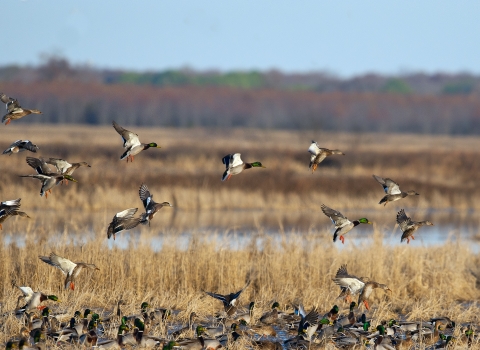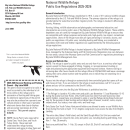Location and Contact Information
About Us
Once a free-flowing river system, the New Madrid earthquakes of 1811-12 changed the river into the lake and swamp environment that exists today. Due to the refuge’s location, significant bottomland forest habitat, and abundance of bird life, it was recognized as a globally Important Bird Area by the American Bird Conservancy in March of 2001.
Our Species
The refuge annually winters several species of waterfowl. Peak numbers in January and February can exceed 200,000 birds. Wood ducks are year-round residents and annually raise approximately 2,500 young on the refuge. Over 225 bird species have been documented on the refuge. Other wildlife to look for are beavers, river otters, raccoons, wild turkeys, white-tailed deer, bobcats, and the occasional armadillo.


